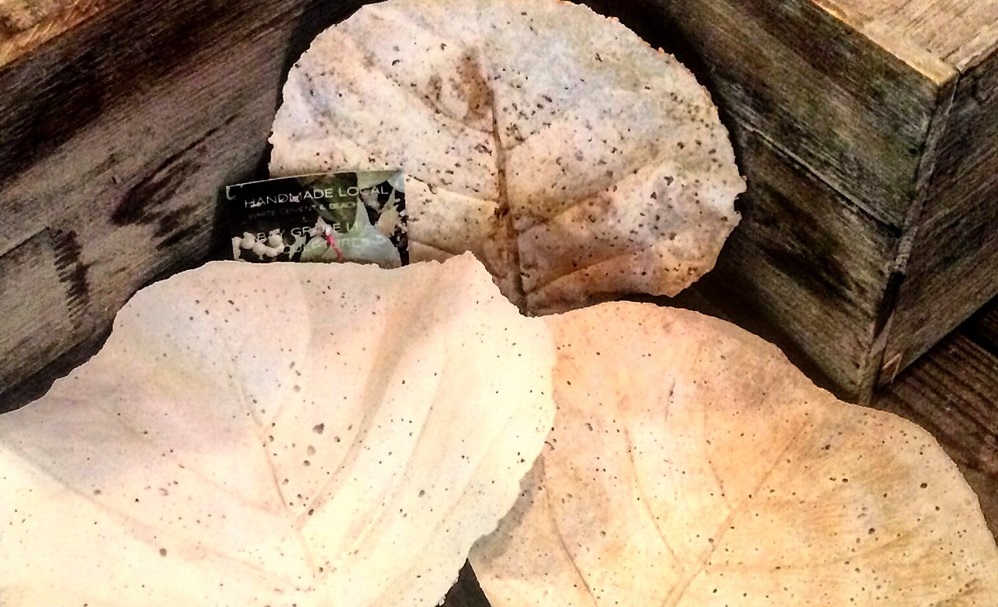Leaves are not meant to be still. Fluttering in the breeze, blown along in a gust of wind, crunching beneath our feet, or disintegrating on the floor, they take many forms, but all include movement in one way or another. To see one captured rigid in time is to see it an unnatural state, and yet that frozen image can often appear to be the leaf’s most perfect form.

Stratton Hatfield captures the beauty of these moments in art that does not stop the lifecycle of the leaf, but rather changes the course of its evolution. The initial blandness of the concrete at the moment of creation is offset by the form of the leaf, and as each piece is destined to spend its life outside that lack of colour does not last long.
“When they [the pieces] do outside they start to change colour and shape,” Mr Hatfield said. “What was white once is now grey; it shows how it evolves in terms of the colour and texture.”
Unlike other yard art Mr Hatfield is not a fan of painting his pieces the colours they inhabited in earlier forms. “I had a client ask for that and I did it, and I don’t think I would do it again,” he said. “I like them to look prehistoric, rock like, like fossils. Some people have referenced them as [looking like] shells, or stone formations, and I like that, I prefer that.”
Mr Hatfield’s pieces change depending on the type of leaf he uses and what he is making. From a Palmetto leaf that will become a 150lb centre piece, to smaller leaves that make unique light fixtures, each is unique. “The Palmetto leaf will be sensational,” he said. “It’s going to be hung on a wall, which the client is going to have to reinforce, and they are going to put in a light fixture, I’m excited about that one.”
Like his art the concrete mixture he uses is of his own making, and involved a significant amount of trial and error. In one corner of his Paget studio sits a pile of broken leaves, testament to the process he has gone through. Those pieces will eventually become a mosaic of his trials, a tribute to the time it has taken to get the combination of light pool sand, white cement and fibre glass just right.
It takes between six and eight hours for Mr Hatfield to complete a piece in the comfort of his studio. There is delight in not having to work outside as he once did, and joy in completing his work. “The freedom to do something that is my hobby gives me a lot of satisfaction,” he said. “If you were here when I did my first piece you would have heard me screaming from how excited I was.”
That joy comes out in the art and the freedom is captured in it too, not least in the leaf that cannot move as it once did.
This article first appeared in RG Spring magazine in March, 2017.

